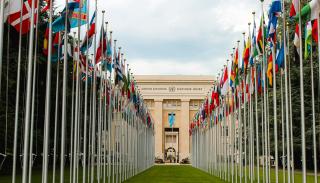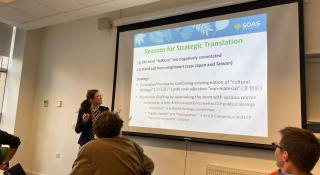
Breadcrumbs navigation
Sustaining gender: Natural resource management, conflict prevention, and the UN Sustaining Peace agenda in times of climate catastrophe
In this short video abstract, authors Caitlin Ryan and María Martín de Almagro discuss the key arguments from their new Review of International Studies article -'Sustaining gender: Natural resource management, conflict prevention, and the UN Sustaining Peace agenda in times of climate catastrophe'.
Want to know more? You can read the full article at DOI: https://doi.org/10.1017/S0260210524000081
This particular article is open access, however BISA members receive access to all articles in RIS (and our other journal European Journal of International Security) as a benefit of membership. To gain access, log in to your BISA account and scroll down to the 'Membership benefits' section. If you're not yet a member join today.
Abstract
Climate change and its potentially violent consequences for international peace and security have transformed the United Nations (UN) approach to Sustaining Peace. One of the emblematic initiatives of this new approach is the UN Joint Programme for Women, Natural Resources, Climate, and Peace. We use feminist peace scholarship to consider what the recent debates about who builds peace and where peace is built in Peace Studies and Environmental Peacebuilding miss when they treat concepts of ‘scale’ and local natural resource management as gender-neutral and what this might tell us about the wider UN Peacebuilding agenda in which it is situated. We make three claims. First, we claim that gendered relations of power that leverage women for win–win opportunities of peace and gender equality (re)produce an idea of a feminised, self-contained local. Second, we demonstrate that this makes it possible to reproduce the dominant political order that privileges intervention, and the dominant economic order that is occupied with forcing ‘local’ economies to adapt their natural resource management strategies. Third, we argue that assuming that ‘the who’ and ‘the where’ of building peace is local makes it much harder to ask about how the conditions of possibility for violence transcend scales.
Image from Mathias Reding on Unsplash


